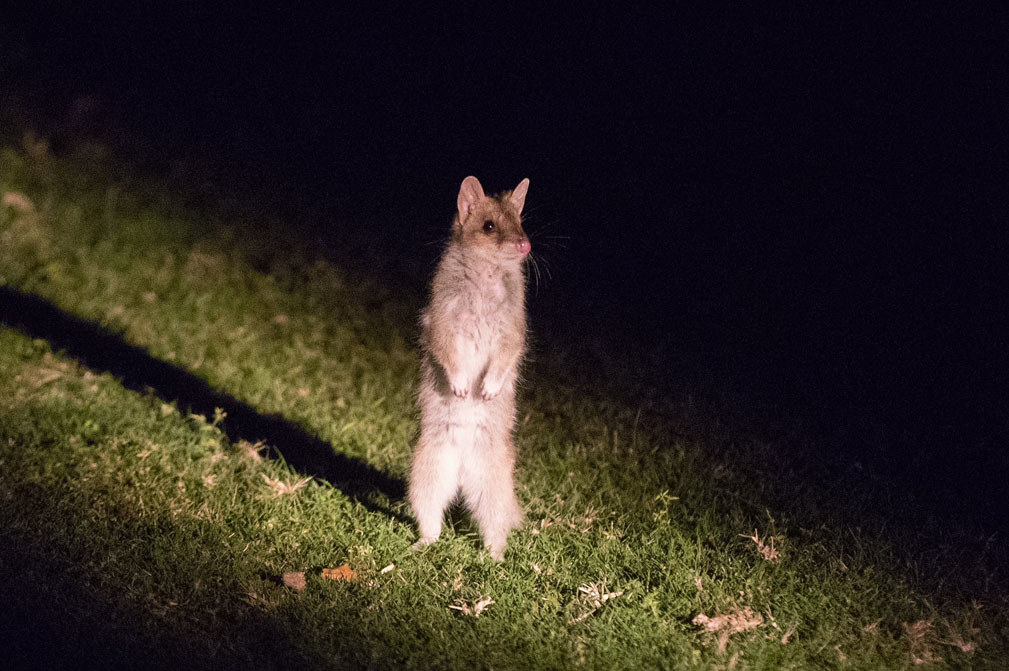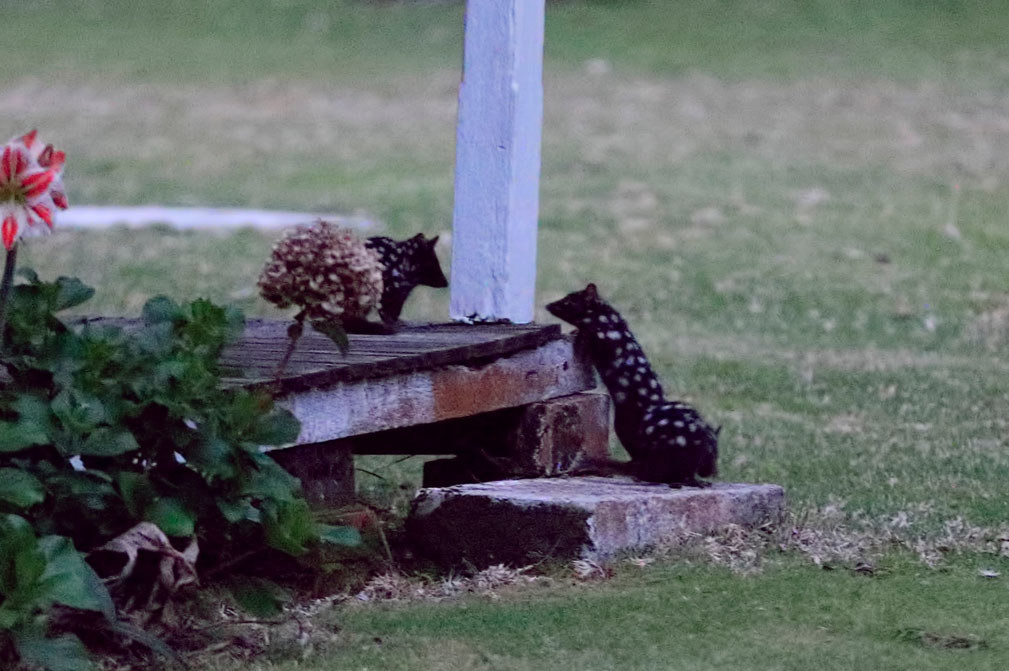Twenty eastern quolls were transferred in March from a Tasmanian wildlife sanctuary to Booderee National Park on the south coast of NSW.
In May the reintroduction program produced the first 15 eastern quoll joeys born on the mainland in over 50 years.
The joeys are now roaming independently of their mothers and they've been observed climbing trees and hunting in the area.

The eastern quoll is a notoriously feisty animal that eats insects and spiders as well as pests such as rabbits, mice, and rats, maintaining an important balance in the ecosystem.
It was once distributed throughout NSW, Victoria, South Australia and Tasmania but was driven to extinction on the mainland by predators such as foxes and feral cats.

The quolls' reintroduction to mainland Australia is a collaborative effort between Parks Australia, WWF, Australian National University (ANU), and Rewilding Australia.
The program was initiated following a 15-year effort by Booderee National Park to reduce fox numbers so the quoll population would have a chance to grow.

Rob Brewster, director of Rewilding Australia, told BuzzFeed News he is cautiously optimistic that the eastern quoll could continue to proliferate in Booderee National Park and NSW as a whole.
"It's definitely early days, and a small population of any species has a much higher chance of going extinct, so it really is a numbers game," said Brewster.
"I'm very happy with the progress and we've proven a lot. We've proven that quolls on the mainland – where foxes are managed – can survive in the bush for over six months."
Brewster says the quoll population will be monitored closely. The reintroduction process will continue in Booderee National Park, with new Tasmanian quolls from Trowunna Wildlife Sanctuary and Devils @ Cradle sanctuary in early 2019.

Quolls have a relatively short natural lifespan for a mammal of their size, about three years, and only have two viable breeding terms in their lifespan.
The eastern quoll joeys at Booderee will be able to begin breeding in May 2019.
Before the initiation of the Booderee National Park project, the last quoll sighting on mainland Australia was in Vaucluse in the 1960s.

